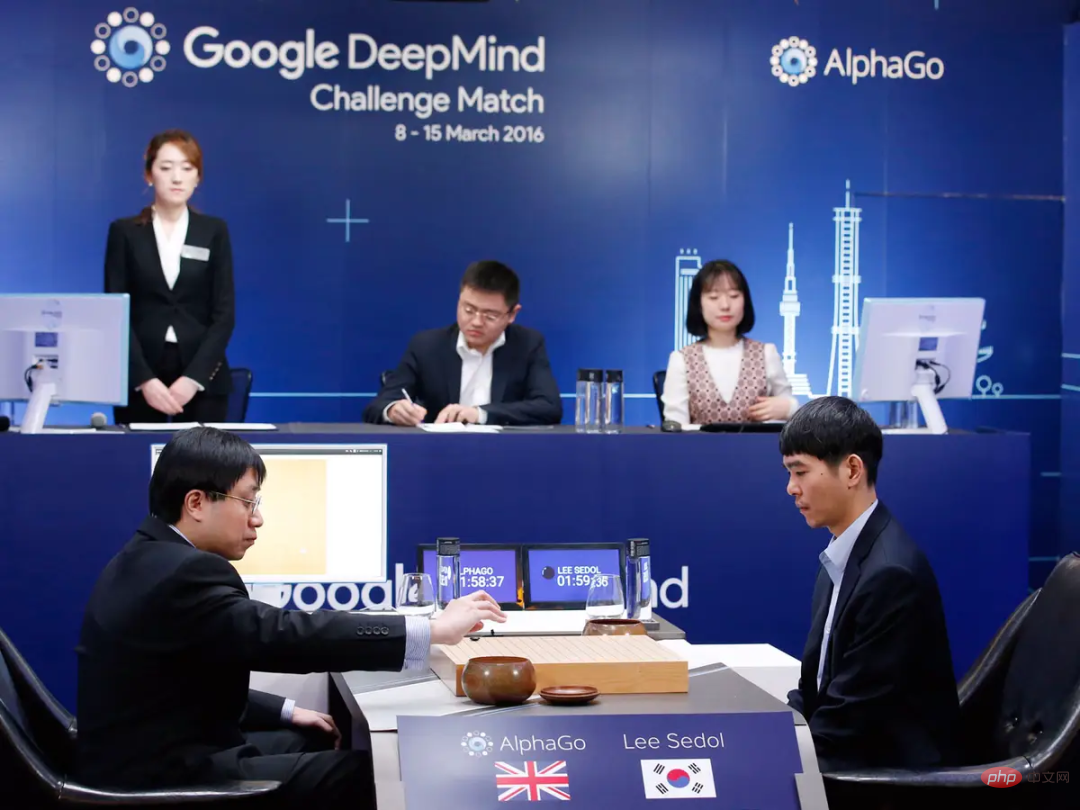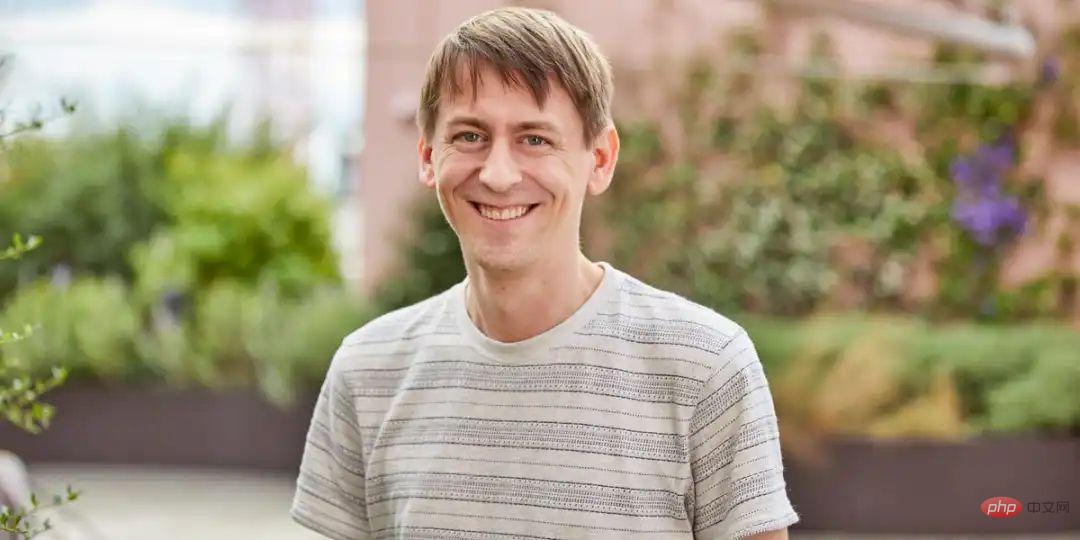 Technology peripherals
Technology peripherals
 AI
AI
 AlphaFold 2 subverts protein structure prediction and changes the history of science
AlphaFold 2 subverts protein structure prediction and changes the history of science
AlphaFold 2 subverts protein structure prediction and changes the history of science
Oxford University professor Matthew Higgins is grappling with a classic head-scratching question: What does protein actually look like?
Since 2005, his laboratory has been focusing on malaria-related issues.
Traditional techniques could only produce vague outlines of protein structures, which confused Higgins.
But by using a new artificial intelligence technology called AlphaFold 2, he deciphered the structure of a key protein used by the parasite that causes malaria.
This breakthrough helped him develop an experimental malaria vaccine that is now being tested in humans.
Malaria kills more than 6 million people each year, and these vaccines may hold the key to fighting the disease. Without AlphaFold, he said, we might still be hitting a brick wall.
It is easy to see from Higgins’ achievements that AlphaFold 2 is rapidly subverting science and medicine.
In just a few years, Alphabet’s artificial intelligence startup DeepMind has grown from winning the game of Go to solving biology’s grand challenges, and now it has been used by more than 100 Thousands of researchers use it, including researchers from universities and researchers from large pharmaceutical companies.
DeepMind CEO Demis Hassabis said in a podcast last year: "AlphaFold is surprising, but it is just the beginning."
From winning Go to changing the history of science
Nowadays, proteins are the main target of almost all drugs, so understanding the protein structure is the key to solving the problem of how to use specific methods to Key to intervening in disease phenotypes.
Before AlphaFold, finding the structure of a protein was a difficult task.
The traditional approach is for researchers to crystallize the protein, turning it into a salt form that the protein is resistant to. If this worked, they bombarded each crystal with X-rays and watched how electrons bounced off it to create the image.
By repeating this process, scientists can learn the 3D structure of a protein.
Higgins said it might take a PhD student a year or two to discover a new structure, but the results are often vague and uncertain.
DeepMind CEO Demis Hassabis is a chess prodigy and evangelist for artificial intelligence. He founded DeepMind in 2010 with the goal of building artificial intelligence systems that can perform certain tasks as well as or better than humans.
In 2016, DeepMind’s artificial intelligence system AlphaGo defeated world-class players in the Go game.

After his victory at Go, Hassabis and David Silver, a top scientist at DeepMind, decided it was time to move from competing at Go to solving problems. Real world problems now.
So they began to focus on protein problems, and decades of work by biologist John Moult paved the way for DeepMind to enter biology.
In 1994, he founded the CASP Protein Structure Prediction Competition (Critical Assessment of Protein Structure Prediction).
Contestants will be assigned the amino acid sequences of about 100 unknown proteins. The three structures of these proteins have been determined but have not been published.
Teams will have several months to develop and use mathematical models to solve these unknown structures. Moult rates their predictions for accuracy. On a scale of 100, a score above 90 indicates that the structure prediction is close to perfect.
DeepMind made its first public attempt at the 2018 CASP conference. The first version of AlphaFold won competitions and beat world standards. In competitions, winner prediction accuracy is typically around 40%, while AlphaFold's result was 60%.
Although this result is impressive, AlphaFold’s predictions have many errors and are not perfect yet. Hassabis wants to do better.

Months before the CASP results were released, John Jumper, one of the top scientists behind AlphaFold, was working with his team Planning together, we want to make incremental improvements to the technology.
Hassabis unexpectedly stopped them, probably meaning "Is it too difficult to solve this problem with the current model? Should we make separate models?"
After that conversation, Jumper abandoned the first version of AlphaFold and started from scratch. Jumper said, "AlphaFold 2 is built on the basis of more biological and physical knowledge of proteins."
At the CASP at the end of 2020, AlphaFold 2 handed in the answer sheet , the accuracy of predicting protein structure reached nearly 90%, which was much higher than other contestants. Experts believe it effectively solves the problem.
"At that moment, I knew we had changed the history of science," Jumper said.

Explosive growth in life sciences
In the months following CASP, DeepMind moves fast.
The team predicted all 20,000 proteins in the human body around Christmas 2020. The results were published in July 2021, along with the code for the software, in a seminal paper in Nature, which has been cited more than 8,800 times, or about 15 times a day.
Hassabis said that the decision to release AlphaFold 2 for free was to maximize the benefit of mankind.
According to CNBC, DeepMind, as a subsidiary of Alphabet, makes money by selling software and services to other Alphabet companies, such as YouTube and Google.
Then, Hassabis established the biotechnology start-up company Isomorphic Labs in 2021 to concentrate on researching drugs. Meanwhile, AlphaFold 2 has been running smoothly, releasing 200 million protein structure predictions last summer.
The pace of research is accelerating rapidly.
According to data from the biomedical research directory PubMed, only 4 papers referenced AlphaFold in 2020. This number will grow to 92 articles in 2021 and 546 articles in 2022. There will be more than 1,000 papers in 2023.
Accelerator for Drug Research
Several biotech companies are now using AlphaFold 2 to develop drugs.
“AlphaFold sparked a wave of innovation by showing people what was possible,” said Chris Bahl, chief scientist at AI Proteins, a Boston startup that also uses AlphaFold to help develop drugs. .

In 2019, Raphael Townshend worked at AlphaFold as a DeepMind intern while he was completing his computer science degree at Stanford University Doctorate of Science.
Now, he runs a startup called Atomic AI in San Francisco, hoping to develop what he calls the "AlphaFold of RNA."
RNA reads the instructions in our genetics (DNA) to create proteins in the body.
His company wants to predict the structure of RNA molecules and hopes to use these studies to develop drugs. Other biotech companies are also using AlphaFold in conjunction with other AI technologies to quickly and cheaply discover potential new drugs.
For example, startup Insilico Medicine is using its artificial intelligence system with AlphaFold to design molecules that block proteins associated with liver cancer. It created one of the molecules and used lab tests to confirm it worked. The company published the study in January.
The company’s CEO, Alex Zhavoronkov, claims that it took his team only about 50 days, less than 100, to go from finding the drug target to designing the drug and testing it in the lab. million, which he believes is a record for drug development.
Zhavoronkov has a photo of Hassabis in his office. “AlphaFold is a wonderful discovery, but it is part of a huge Lego puzzle that you need to have to successfully succeed. Bringing drugs to the market."
However, although this artificial intelligence technology makes drug development faster and easier, the company does not plan to use it due to the cost of clinical trials. Drugs advance into human studies because the process of testing them on animals and humans still takes many years and hundreds of millions of dollars.
What’s next
The potential of artificial intelligence in biotechnology is limited.
AlphaFold's predictions are not always perfect. The prediction model is very accurate in solving a small group of unknown proteins, but this does not guarantee that all predicted structures are correct.
Oxford University’s Higgins said he himself would use laboratory experiments to double-check AI predictions, so he is wary of research papers that rely entirely on AlphaFold’s predictions because There is a lack of experimental verification.
Despite these limitations, AlphaFold 2 is already a major breakthrough that has even sparked talk of a Nobel Prize, especially if it wins $3 million in 2022 After the award.
Pedro Domingos, professor of computer science at the University of Washington, said that the AlphaFold team’s research is deeper, such as how proteins interact with other proteins or small molecules. Such questions are very meaningful. .
Their research will become increasingly difficult in the future, and it is unclear whether AI will be able to handle the next research. But Domingos believes that DeepMind’s team is very good, so he is very optimistic about its future development.
DeepMind has done some research in genetics and predicting more complex protein interactions, but the big biological questions they will target next remain mysterious. It was revealed that the application of its technology by other institutions and companies in the future will be "increasingly difficult to grasp."
DeepMind’s Jumper said his AlphaFold team is focused on clearing the next big hurdle in biological research. But it remains a secret.
"I have my theories about where this might go, what kind of technology it is, and what the future might look like, and I won't reveal it."
The above is the detailed content of AlphaFold 2 subverts protein structure prediction and changes the history of science. For more information, please follow other related articles on the PHP Chinese website!

Hot AI Tools

Undresser.AI Undress
AI-powered app for creating realistic nude photos

AI Clothes Remover
Online AI tool for removing clothes from photos.

Undress AI Tool
Undress images for free

Clothoff.io
AI clothes remover

AI Hentai Generator
Generate AI Hentai for free.

Hot Article

Hot Tools

Notepad++7.3.1
Easy-to-use and free code editor

SublimeText3 Chinese version
Chinese version, very easy to use

Zend Studio 13.0.1
Powerful PHP integrated development environment

Dreamweaver CS6
Visual web development tools

SublimeText3 Mac version
God-level code editing software (SublimeText3)

Hot Topics
 1382
1382
 52
52
 Four recommended AI-assisted programming tools
Apr 22, 2024 pm 05:34 PM
Four recommended AI-assisted programming tools
Apr 22, 2024 pm 05:34 PM
This AI-assisted programming tool has unearthed a large number of useful AI-assisted programming tools in this stage of rapid AI development. AI-assisted programming tools can improve development efficiency, improve code quality, and reduce bug rates. They are important assistants in the modern software development process. Today Dayao will share with you 4 AI-assisted programming tools (and all support C# language). I hope it will be helpful to everyone. https://github.com/YSGStudyHards/DotNetGuide1.GitHubCopilotGitHubCopilot is an AI coding assistant that helps you write code faster and with less effort, so you can focus more on problem solving and collaboration. Git
 Which AI programmer is the best? Explore the potential of Devin, Tongyi Lingma and SWE-agent
Apr 07, 2024 am 09:10 AM
Which AI programmer is the best? Explore the potential of Devin, Tongyi Lingma and SWE-agent
Apr 07, 2024 am 09:10 AM
On March 3, 2022, less than a month after the birth of the world's first AI programmer Devin, the NLP team of Princeton University developed an open source AI programmer SWE-agent. It leverages the GPT-4 model to automatically resolve issues in GitHub repositories. SWE-agent's performance on the SWE-bench test set is similar to Devin, taking an average of 93 seconds and solving 12.29% of the problems. By interacting with a dedicated terminal, SWE-agent can open and search file contents, use automatic syntax checking, edit specific lines, and write and execute tests. (Note: The above content is a slight adjustment of the original content, but the key information in the original text is retained and does not exceed the specified word limit.) SWE-A
 Learn how to develop mobile applications using Go language
Mar 28, 2024 pm 10:00 PM
Learn how to develop mobile applications using Go language
Mar 28, 2024 pm 10:00 PM
Go language development mobile application tutorial As the mobile application market continues to boom, more and more developers are beginning to explore how to use Go language to develop mobile applications. As a simple and efficient programming language, Go language has also shown strong potential in mobile application development. This article will introduce in detail how to use Go language to develop mobile applications, and attach specific code examples to help readers get started quickly and start developing their own mobile applications. 1. Preparation Before starting, we need to prepare the development environment and tools. head
 Summary of the five most popular Go language libraries: essential tools for development
Feb 22, 2024 pm 02:33 PM
Summary of the five most popular Go language libraries: essential tools for development
Feb 22, 2024 pm 02:33 PM
Summary of the five most popular Go language libraries: essential tools for development, requiring specific code examples. Since its birth, the Go language has received widespread attention and application. As an emerging efficient and concise programming language, Go's rapid development is inseparable from the support of rich open source libraries. This article will introduce the five most popular Go language libraries. These libraries play a vital role in Go development and provide developers with powerful functions and a convenient development experience. At the same time, in order to better understand the uses and functions of these libraries, we will explain them with specific code examples.
 Which Linux distribution is best for Android development?
Mar 14, 2024 pm 12:30 PM
Which Linux distribution is best for Android development?
Mar 14, 2024 pm 12:30 PM
Android development is a busy and exciting job, and choosing a suitable Linux distribution for development is particularly important. Among the many Linux distributions, which one is most suitable for Android development? This article will explore this issue from several aspects and give specific code examples. First, let’s take a look at several currently popular Linux distributions: Ubuntu, Fedora, Debian, CentOS, etc. They all have their own advantages and characteristics.
 SOTA performance, Xiamen multi-modal protein-ligand affinity prediction AI method, combines molecular surface information for the first time
Jul 17, 2024 pm 06:37 PM
SOTA performance, Xiamen multi-modal protein-ligand affinity prediction AI method, combines molecular surface information for the first time
Jul 17, 2024 pm 06:37 PM
Editor | KX In the field of drug research and development, accurately and effectively predicting the binding affinity of proteins and ligands is crucial for drug screening and optimization. However, current studies do not take into account the important role of molecular surface information in protein-ligand interactions. Based on this, researchers from Xiamen University proposed a novel multi-modal feature extraction (MFE) framework, which for the first time combines information on protein surface, 3D structure and sequence, and uses a cross-attention mechanism to compare different modalities. feature alignment. Experimental results demonstrate that this method achieves state-of-the-art performance in predicting protein-ligand binding affinities. Furthermore, ablation studies demonstrate the effectiveness and necessity of protein surface information and multimodal feature alignment within this framework. Related research begins with "S
 Understanding VSCode: What is this tool used for?
Mar 25, 2024 pm 03:06 PM
Understanding VSCode: What is this tool used for?
Mar 25, 2024 pm 03:06 PM
"Understanding VSCode: What is this tool used for?" 》As a programmer, whether you are a beginner or an experienced developer, you cannot do without the use of code editing tools. Among many editing tools, Visual Studio Code (VSCode for short) is very popular among developers as an open source, lightweight, and powerful code editor. So, what exactly is VSCode used for? This article will delve into the functions and uses of VSCode and provide specific code examples to help readers
 Exploring Go language front-end technology: a new vision for front-end development
Mar 28, 2024 pm 01:06 PM
Exploring Go language front-end technology: a new vision for front-end development
Mar 28, 2024 pm 01:06 PM
As a fast and efficient programming language, Go language is widely popular in the field of back-end development. However, few people associate Go language with front-end development. In fact, using Go language for front-end development can not only improve efficiency, but also bring new horizons to developers. This article will explore the possibility of using the Go language for front-end development and provide specific code examples to help readers better understand this area. In traditional front-end development, JavaScript, HTML, and CSS are often used to build user interfaces



